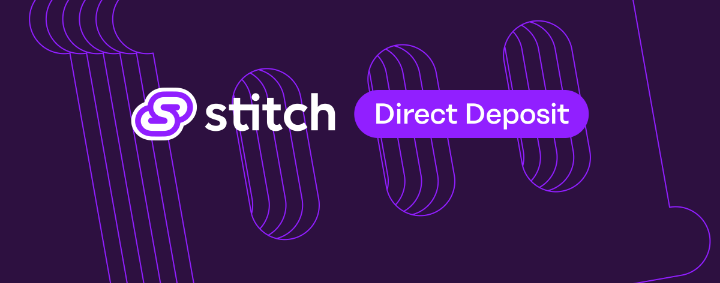Stitch, a payments and data API business based in South Africa has announced the addition of direct deposit or manual transfer as a payment option. This will enable Stitch’s clients in South Africa to give their customers a greater number of different methods to pay using a single API.
According to a press statement, Stitch’s direct deposit service will enable businesses to bypass the need to create and maintain specific integrations with individual banks, receive updates for payments made via manual EFT, reconcile payments flawlessly alongside other Stitch methods, and enjoy faster settlement times.
In addition, businesses will be able to save time by avoiding the need to create and maintain direct integrations with individual banks.
Stitch’s Chief Product Officer, Junaid Dadan, had this to say in response to the launch of the product:
“We want to give consumers more choice in how they wish to pay, while ensuring a fantastic experience for them, and taking the headache out of payments acceptance and reconciliation for the merchant. With Direct Deposit, customers can choose to initiate a transfer from their banking apps to a merchant account. The merchant will be notified instantly, and the transactions will be automatically reconciled alongside other payments coming through Stitch – no need for businesses to develop and maintain integrations with each bank individually.”
Read also: Stitch Raises US$21Million in Funding For Its Financial Services
The Introduction of Stitch in 2021
Open banking is a concept that was the driving force behind the conception of Stitch. The company was founded on the premise that opening up access to bank data would hasten the rate of innovation all over the continent.
“We were under the impression that the introduction of ground-breaking new financial products would follow shortly after giving companies the ability to simply build on top of banking data.”
So far, we’ve been spot on. Since we came out of stealth mode in February of this year, we have been absolutely blown away by the inventiveness of the companies that we collaborate with.
This includes everything from apps that support novel ways to save money to brick-and-mortar vendors who have found ways to offer loans to their customers. We have had the opportunity to observe how the potential of open banking data has enabled hundreds of firms to access previously inaccessible product opportunities.
However, we quickly came to the conclusion that merely providing our consumers with access to data was not sufficient to fulfil all of their requirements. Stitch Payments, our newest product line, will be available for purchase today, and we couldn’t be more excited to share this news with you.
Access to open banking data and an enhanced experience using pay by the bank are only two examples.
Early on, it became abundantly evident to us that, in addition to the obstacles of accessing user data, businesses battled to find inexpensive methods of accepting payments on their platforms, ideally with an increased number of and improvements upon the customer’s available options.
More Importance of the Role of Stitch
Card payments, for example, are not especially widespread throughout the continent; furthermore, in certain areas, such as South Africa, there are substantial costs associated with card transactions. According to an article that was published earlier this month in Quartz, bank transfers make up a sizeable share of the payment choices available in large markets such as South Africa and Nigeria.
Further difficulties were provided by several other possibilities for bank payments. In contrast to card technology, the Electronic Funds Transfer (EFT) system, which is a robust interbank transfer rail, permits direct account-to-account payments at a cost that is a fraction of what it would be otherwise.
However, manual EFTs have a higher risk of user error, which can result in a higher rate of drop-off as well as potential fraud. When it comes to UI, UX, and security, many of the InstantEFT companies that have entered the market in the past few years face challenges to broad adoption.
These barriers include contradictory branding, multiple unneeded screens, and excessive load times.
We set out to find a solution to this problem by utilising the infrastructure that we had built for open banking data in order to assist businesses in moving money more quickly, securely, and at lower fees – all while providing a better user experience that had the potential to increase conversion rates and decrease drop-off rates.
